Genre: Platformer Developer: Sega Ent. Publisher: Sega Ent. Players: 1 Released: 2017
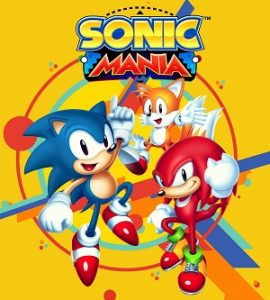 Never in my life had I been more excited for the launch of a game before Sonic Mania. Like Lazarus returning from the dead, the beloved 2D Sonic The Hedgehog was returning in an all-new game. I had played everything I could get my hands-on when it came to old-school Sonic. I played everything: From the 2D re-releases of the original games on Android and iOS, to the online fan games, forgotten Game Gear spin-offs, and indie titles such as Freedom Planet, inspired by the original series. So, when Sonic Mania, a 2D Sonic game with pixel-perfect graphics and new zones was announced unexpectedly at Sonic The Hedgehog’s 25th Anniversary party, the crowd went wild. And, in a move that shocked the gaming world, SEGA was handing the next iteration of its most heralded (and maligned) franchise to two fan game creators.
Never in my life had I been more excited for the launch of a game before Sonic Mania. Like Lazarus returning from the dead, the beloved 2D Sonic The Hedgehog was returning in an all-new game. I had played everything I could get my hands-on when it came to old-school Sonic. I played everything: From the 2D re-releases of the original games on Android and iOS, to the online fan games, forgotten Game Gear spin-offs, and indie titles such as Freedom Planet, inspired by the original series. So, when Sonic Mania, a 2D Sonic game with pixel-perfect graphics and new zones was announced unexpectedly at Sonic The Hedgehog’s 25th Anniversary party, the crowd went wild. And, in a move that shocked the gaming world, SEGA was handing the next iteration of its most heralded (and maligned) franchise to two fan game creators.
Longtime Sonic fan game creators Christian “The Taxman” Whitehead and Simon “Stealth” Thomley have diligently perfected their craft over the past two decades on ROM hacks like Sonic Megamix, which was noted for its physics engine being identical to the original games. In past years, Fan game creators were used to getting handed cease-and-desist letters when they made sequels to their favorite franchises, and SEGA was no exception to this, giving one to Streets of Rage fan-game creator BOMBERGames, for their lovingly-developed fan mashup Streets of Rage Remake. It understandably came as a surprise when Whitehead was given the green-light to develop official ports of Sonic 1, 2 and CD, to iOS and Android. These ports, which were re-coded from the ground up and included new features, and in Sonic 2’s case an entirely new level, garnered great reception with fans and the company. This reception internally gave Whitehead and Thomley, who had at this point become legends in the realm of fan-game creators, enough of Sega’s trust to make Sonic Mania.
A Return to Form…
When the trailer for Sonic Mania appeared last July, and its creators stating they wanted to make a 2D game for the Sega Saturn, it was as if, after a long storm, the rays of sunshine had finally graced the skies. There was Sonic, once again in glorious 2D, and 60 FPS to boot! No wonky physics, no homing attack, no “warehogs,” and no cut scenes with new friends. This looked like Sonic at his finest. There was beautiful 2D pixel art, new zones, and fantastic music. Blogs were heralding the return of the prodigal son, long lost to the temptations of the foreign lands of 3D graphics and whatever new animal Sonic Team could anthropomorphize.
Here Sonic was again, ready to run back into the arms, and hearts, of the gamers who initially cherished him back in 1991 and made both Sega and its Genesis household names. Regardless of how many times the classics have been re-released, a full-fledged Sonic game with new zones is what the people wanted. But after so long, would fans buy it? And after so many disappointments, would Sonic Mania live up to the hype of its predecessors, started nearly 25 years ago?
At the start, one can easily tell that Sonic Mania’s creators, a small team of only two developers, three designers, and one music producer, were the most die-hard of Sonic fans. The attention to detail is bar-none, the greatest love letter to the Sega Genesis Sonic games that one could possibly think of. Only those obsessive nerds (and I say that positively) found only on the Internet could inject this much detail into one game. You know, the ones who translated the one game in your favorite series that only got a Japanese release completely into English, or spent their free-time designing a special ROM hack that contained settings and beta stages and music for the best of everything from Sonic 3 & Knuckles. Sonic Mania’s creators are from THAT part of the Internet, the part we all know and love but still wonder where the heck anyone found the time to do it.
As a self-professed Sonic “Maniac” myself, I found myself in awe at the number of references and immense attention in Sonic Mania found in every stage. Every game released before 1999, whether main series or spinoff, is referenced in some way in this new title. If your favorite stage from the 2D series didn’t make it into Mania, an element of it certainly did, whether it be a badnik, a sound effect, a previous level design gimmick. And it’s not just what was in the games: It was what was in the manuals, the prototypes, the spin-offs, and the ports that only die-hards like us spend analyzing and reviewing for years on websites like Sega-16. It’s as if Whitehead and Thomley took everything about the Sonic series and stuck it into a blender. Unused badniks, like Splat the Rabbit, who only showed up in the prototype of the original game, appear here. There’s even a reference to a sign in fellow SEGA franchise Streets of Rage. There’s something from every Sonic game in Sonic Mania. I can’t even begin to point out every reference, but I’ll do my best to point to those which are relevant to the experience.
… or More of the Same?
Of the game’s 12 zones, eight are from previous games, and four zones are entirely new. They are: Green Hill Zone (Sonic 1), Chemical Plant Zone (Sonic 2), Studiopolis Zone, Flying Battery Zone (Sonic and Knuckles), Press Garden Zone Hydrocity Zone (Sonic 3), Stardust Speedway Zone (Sonic CD). Mirage Saloon Zone, Lava Reef Zone (Sonic and Knuckles), Metallic Madness Zone (Sonic CD), and Titanic Monarch Zone.
I must say that with all said and done, I was a bit disappointed the lack of new zones in Sonic Mania. With a game as heralded as a sequel to the original series, I was expecting more original content. Back in the day, the new zones of each subsequent sequel were exciting to experience on first playthroughs. It was an interesting treat to see which social critique Sonic Team could wrap into a new Sonic level. Whether it was a polluting factory, an “oil ocean,” or the construction platforms for Dr. Robotnik’s own version of the Death Star, each new zone was a treat in the original four games. So, to see eight of them return in Sonic Mania was a bit of a letdown.
Thankfully, the game shakes things up a little bit despite the familiar environments. Mania’s level design takes the most inspiration from Sonic 3. Each zone is split into two acts. They’re extremely large and have multiple paths that lead to the finish line, but the zone layout, unlike past Sonic games, are set for maximum speed. There’s no foot-tapping here. You’ll find more loop-de-loops, springs, speed bumps, and other gameplay elements that will have you flying through every zone, making for a fun romp through each level. Sonic has never flowed this well before, and Whitehead and Thomley have successfully developed on the level design side, what makes a Sonic stage truly memorable. The remakes of Stardust Speedway and Metallic Madness from Sonic CD benefit the most from the new zone-design, scrapping the previously clunky, slow-paced level design to one that blends the best of the games in the main series together, a perfectly flowing, yet completely explorable stage.
With three playable characters in Sonic, Tails, and Knuckles, there is also branching level design, a feature also found in Sonic 3 and Knuckles. Alongside different pathways, Knuckles has his own different zone in act one of Mirage Saloon, as well as an exclusive boss fight. Though I must say, I feel that more could have been done in this area. With the massive size of the levels, there was plenty of room for Knuckles to get more exclusive pathways than he ended up with in Sonic Mania.
The four new zones are a bit of mixed bag, however, with Whitehead and Thomley not being able to get too far away from previous 2D Sonic gameplay mechanics. The best zone by far is the brand-new Studiopolis Zone, where Sonic is found running around Dr. Robotnik’s movie set, complete with popcorn makers, satellite dishes that teleport the player, extending director’s chairs, and bingo ball machines. Mirage Saloon Zone is a homage to Sonic 2’s scrapped Dust Hill Zone, complete with a similar background to the one found in that game’s long-ago discovered prototype. The first act of the zone for Sonic is a complete re-hash of Sonic 2’s Wing Fortress Zone, one that even many die-hard fans were probably not all too happy to play through again. I found the stage to be stilted, and overly difficult. Act two fares much better.
Even the remade levels have elements from other, not-included past Sonic games. Stardust Speedway contains the boss fight from Metallic Madness in Sonic CD, as well as elements from Sonic 3’s Marble Garden Zone. Oil Ocean Zone contains a gameplay mechanic and level design similar to the one found in Sonic and Knuckles’ Studiopolis Zone. I could go on and on, but it seems that the creators are still too stooped in the fangame design-style of making games. One of the great things about the 2D iterations of Sonic was that new gameplay mechanics were found in each new zone of each new game. Sonic Mania on the other hand, retreads to past games to show its dedication, but the gameplay suffers a bit as a result.
The boss fights are also a hit-and-miss, and many of them also chock-full of homages to past titles. During the face-off with Metal Sonic in Stardust Speedway Zone, you are attacked by mini-Metal Sonics that look identical to the one found in Sonic The Hedgehog 2 on Game Gear. The Hard-Boiled Heavies of Mirage Saloon Zone turns into characters from long-forgotten arcade Virtua Fighter knockoff Sonic the Fighters: Fang the Weasel, Bean the Dynamite, and Bark the Polar Bear. Even the sound effects are mined from past games, with the Mirage Saloon Zone boss co-opting the ring loss sound effect from Sonic Chaos on Game Gear. At the end of Chemical Plant Zone, in what is perhaps the most unique boss fight of the entire series, you face Dr. Robotnik in a game of Mean Bean Machine. In Hydrocity Zone, the tables are turned, and you find yourself in Dr Robotnik’s machine he attacked you with during the boss fight in Sonic 3. There are however, a couple of boss fights that are far too easy or poorly designed. Flying Battery’s act two boss, which contains Dr. Robotnik in a spider mech is particularly frustrating, as is the recreation of Oil Ocean’s Octopus boss. Others, such as the act two boss of Studiopolis Zone, or the act one boss of Oil Ocean Zone, are so easy that the boss usually can be beaten before he can even get an attack in. Sonic Mania’s bosses are varied in their design, but the execution is inconsistent, seemingly playing on the nostalgia factor more than good gameplay design.
No Sonic game is complete without a great special stage. Thankfully, Mania delivers here, with its main special stages being a similar cacophony of homages to Sega Saturn spin-off Sonic R, the UFO destroyer special stages of Sonic CD, and the blue sphere special stages of Sonic 3. In each stage, our hero is simultaneously collecting blue spheres and rings to gain enough speed to “catch the UFO,” holding the Chaos Emerald, another wink-and-nod to Sega’s line of crane game machines found in Japanese arcades that were branded “UFO Catchers.” They’re one of the best new additions to Sonic Mania, and by far the most fun and most polished special stage of the entire series.
Sadly, the Blue Sphere game, which already had countless amounts of zones when fans put Sonic 1 on top of the Sonic & Knuckles lock-on cart, has returned in the form of a whopping 32 bonus stages! This time, they exist only to collect medals that are used to unlock game features, including a two-player version of Mean Bean Machine. They weren’t particularly fun when I had to play through them sixteen different times in Sonic 3 and Knuckles, so to see them return in Mania in place of an original bonus stage is another disappointment. Despite playing through the game twice, once with Sonic, and once with Knuckles, I was only able to beat 30 of them.
While the graphical effects of Sonic Mania may seem tame to younger gamers in comparison to the 3D graphics frequently found today, it still impresses those of us who grew up in the Genesis era, when “Blast Processing” and rudimentary pre-rendered 3D graphics still ruled the day, some of which still find their way into Sonic Mania alongside some top-shelf sprite works and colorizations. It’s clear that the game takes much of its art and graphical inspiration from the otherwise-maligned Knuckles’ Chaotix on the 32X, whose graphical capabilities brought the series to heights never seen again, until now. One of the most exciting new elements is jumping between the background and the foreground of Metallic Madness Zone, using that cool “Mode 7” effect that every Genesis owner was kind-of jealous of back in the day, when only the Super Nintendo could do it in games like Super Mario World and TMNT IV: Turtles in Time. There’s even a built-in “CRT TV” graphical filter emulating 1990s televisions and scanlines that gives Sonic Mania the distinct look and feel that past iterations of the franchise had back in the day.
And Tee Lopes soundtrack is heavenly. I listened to every track that was released before the game came out ad nauseum. Perhaps the best feature of this release is Tee Lopes showing off his love for the original Sonic soundtracks, with remixes and new tunes that couldn’t have been done any better. Of highlight are Stardust Speedway’s Act 1 slow jam ‘90s R&B revival, and Green Hill Zone 2’s superb remix. Tee Lopes highlights the original tunes with the addition of new percussion, and lots of trumpets to fill in the gaps. Even the new tracks for boss fights and the original stages are catchy. It sounds like a Sonic soundtrack, but fresh enough that it gives that special touch to the game.
A Worthy Update?
So, this sounds great and all to the fan who can notice the massive amounts of references that I just spouted out ad nauseum about Sonic Mania, but is the blender of references to spinoffs, prototype zones, former boss fights, and long-lost Sonic characters enough to make the hedgehog’s newest adventure the pinnacle of the game we’ve all been waiting for?
Yes and no.
Aesthetically, Sonic Mania hits every nail on the head. For the casual gamer, the 2D graphics and gameplay is great and polished enough that fans who hadn’t touched their Genesis in 25 years were happy as a clam to buy a new Sonic game and play it. Likewise, fans who didn’t grow up with the original games were introduced to the old-school Sonic gameplay that made everyone love the franchise in the first place.
But for the die-hards like me who have played through the fan offerings, the remakes, and Freedom Planet, Sonic Mania at times feels like too much of a rehash. It seems that its creators were put on a leash by SEGA’s upper management to not stray too far from familiar territory. They failed to realize that mere speed in each level was not the end-all-be-all of Sonic The Hedgehog. Rather, it was the colorful, new zones that came with each new installation of the franchise that kept us wanting more. Exploring lush green forests intermixed with zones that gave a social critique of pollution in the modern world was an exciting and new thing for 1991. Playing the same Sonic zones again in 2017 doesn’t really give that same thrill, wonder and awe that former installations of the series gave to new players. Even the new levels, which few and far between are bogged down by containing too many elements of past Sonic games in them, just out of reach of what could be greatness.
Spin Dashing in the Past but in Great Style
Overall, Sonic Mania accomplished what it set out to do. It has achieved massive accolades among those general fans who have played the game and enjoyed it. But a pastiche of past games is simply that, a pastiche. Sega’s effort is much more professional, well-designed, and smoother to play than any ROM hack could ever dream of. But rather than come up with new gameplay ideas, Sonic Mania seems to find a little too much comfort in what has been done before, perhaps indicative of society’s current love of nostalgia more than anything else, found in the recent plethora of sequels, remakes, and reboots to popular books, movies, and other video game series. It’s hard to look at Sonic Mania as anything more than another nostalgic cash-in alongside the likes of Ducktales: Remastered, Mega Man 9 and 10, and the Wii’s Castlevania: ReBirth. And I’m guilty of buying all of those games too, because at the end of the day, I just want to play more 2D video games, particularly Sonic games, whether they’re rehashes or original.
And sadly, I know if they make a sequel to Sonic Mania, I’ll be the first in line to buy it. With the history of this franchise, even a derivative of the real thing is better than nothing. I just can’t say I’m very proud of feeling so. We can only hope that Sonic Mania improves on its lacking features next time around.

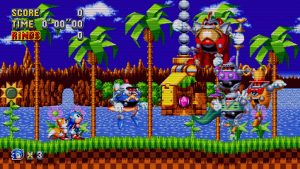
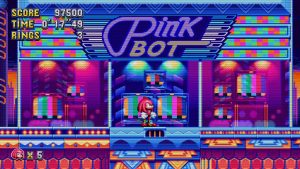
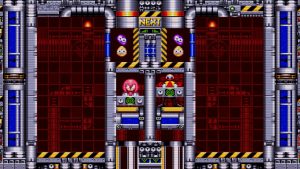
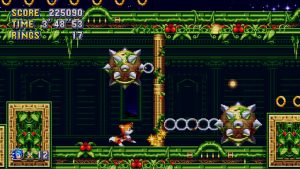
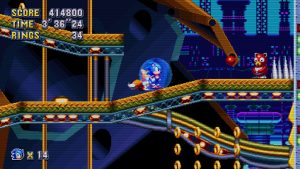
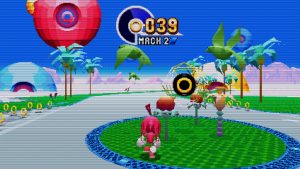

Recent Comments